5 sustainability tips for National Cat Day
5 sustainability tips for National Cat Day
5 sustainability tips for National Cat Day
10/28/2020

Oct. 29 is National Cat Day! Join us as we celebrate our furry (and sometimes hairless) feline friends. If you’re a cat owner, like me, or a future cat owner who is concerned about your impact on the environment, this article is just for you. I say “cat owner” loosely because there’s a saying that “dogs have owners and cats have staff.”
Here are five tips to living more sustainably with your cat(s):
- Switch to beefless cat food to reduce your cat’s carbon “pawprint.”
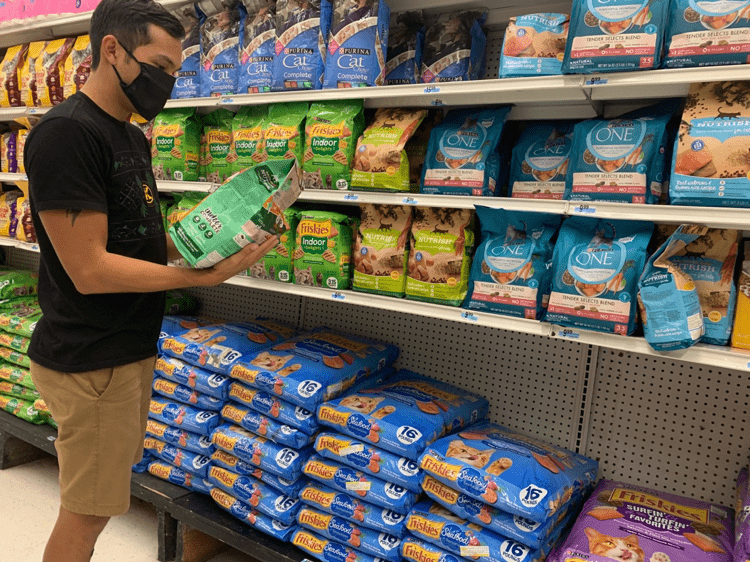
Unlike humans, cats are carnivores, so even if you’re already doing your part to reduce your carbon footprint by reducing your meat consumption, there’s almost no way around it for cats. However, cats can reduce their carbon footprint (or “pawprint”) by having a diet without beef. Beef has the highest environmental impact of all meats due to cattle’s enormous amount of greenhouse gas emissions, which contribute to global warming. Did you know that livestock contributes almost as much greenhouse gases as all automobiles on the planet combined?Next time you go shopping for cat food, read the ingredients and avoid beef as much as possible. Instead, opt for ingredients with lower carbon footprints, such as fish and chicken. While writing this article, I discovered that my cat’s food contained beef. After looking at the ingredients in other cat food brands, I now know which to choose next time.
- Choose environmentally friendly cat litter alternatives to conserve resources.
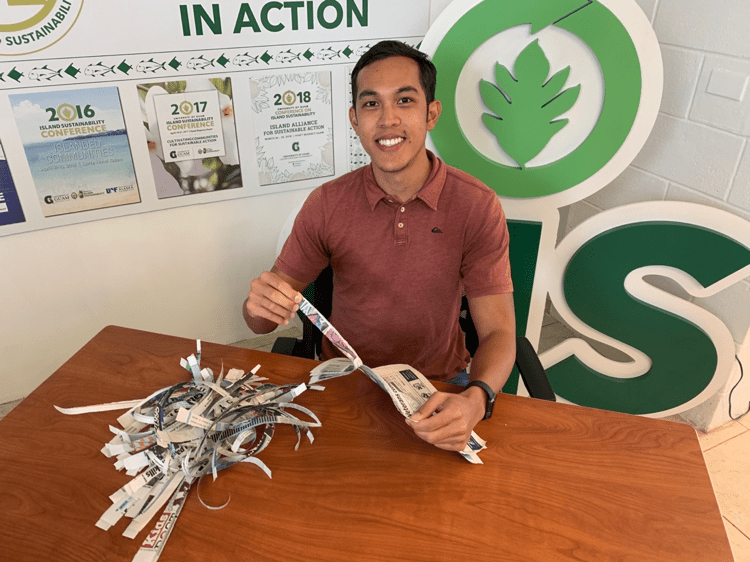
Many commercial cat litter products contain clay, which is often derived from strip mining, a practice that leads to habitat destruction, erosion, water pollution, and more. Moreover, these litters contain silica dust, which can be extremely harmful to your respiratory health. Silica dust is made of tiny particles — up to 100 times smaller than a grain of sand — that you can accidentally breathe in.
Look for healthier, more sustainable litter that’s biodegradable and made from renewable resources such as:
• pine wood pellets and other wood fiber
• corn, wheat, and other grains (preferably non-GMO)
• old newspapers
• and clumping sawdust.If you’re strapped for cash or in an emergency and need something right away, you can always use shredded paper and newspaper as an alternative.
Keep in mind that most cats resist change and need time to adjust to different types of litter. When I transitioned my cats’ litter, I started by adding small amounts of the new litter into the litter box each day until the new litter was fully integrated.
- Dispose of your cat’s waste sustainably to reduce plastic pollution and protect our
ocean.
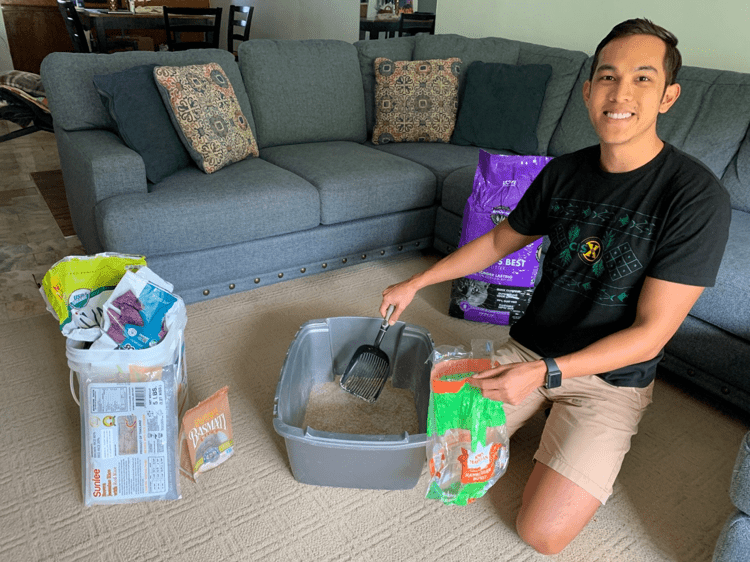
Although it is recommended to scoop your cat’s waste at least once a day, this requires a lot of disposable plastic bags. Single-use plastic bags negatively impact our environment. Improperly disposed plastic bags pollute our oceans, entangle marine life, and contribute additional waste to our landfill.
To reduce plastic pollution, bring your own bag when you go shopping but also save food packaging that can be reused as trash bags for cat waste, such as bags from chips, cereal, crackers, bread, and frozen goods. Reuse these to give your food packaging a second life and so you don’t have to stop bringing your reusable bag when you go shopping (or get takeout).
It is not recommended to flush cat waste down the toilet. Not only could it harm your plumbing, it can also release Toxoplasma, a harmful organism that can harm sea animals in the ocean that municipal sewer systems cannot eliminate. This is a reason why pregnant women and people with weakened immune systems should avoid cleaning cat litter. As an extra precaution, you can wear your reusable face mask while cleaning the cat litter and, of course, wash your hands thoroughly right after.
- Have your cat spayed or neutered to improve economic and environmental conditions.
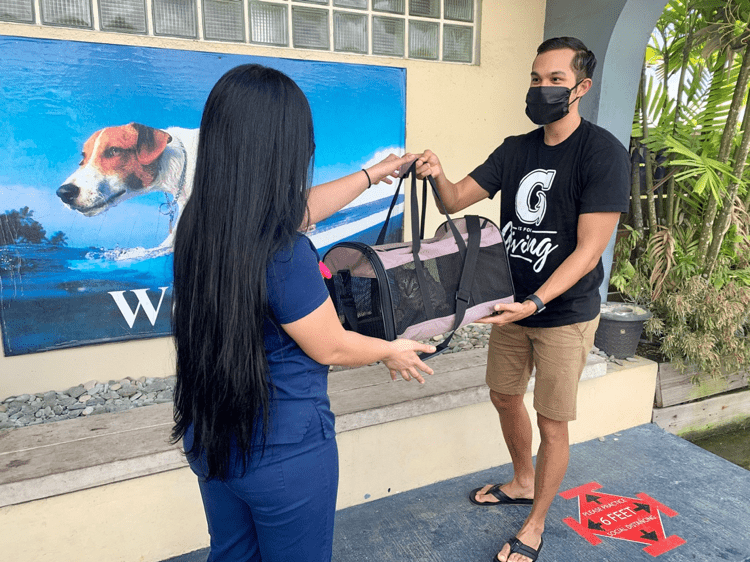
While cats are family pets for many people, many are stray or feral and cause social and biological issues in many communities. Because of this, spaying or neutering your cats is essential for the well-being of everyone.
In Guam, stray or feral cats are a nuisance for many residents. Public safety is at risk because, just like dogs, cats can carry rabies and other zoonotic diseases. Also, just like dogs, cats often fall victim to Guam’s motorists and unfortunately end up as roadkill. Lastly, having a large feral and stray cat population in Guam is one of the reasons why it’s difficult to repopulate our native bird species (e.g. the Ko’ko’ bird, known in English as the Guam rail). Cats are predatorial species that could easily decimate a bird population, so it is strongly encouraged to keep your cats indoors as much as possible.
Minimizing the stray and feral cat population is key to reducing all these issues. Spay or neuter your cat ASAP at any of the following local veterinary offices:
• Animal Medical Clinic: (671) 637-8387
• Dr. Bob Hildreth: (671) 682-8890
• Isla Veterinary Clinic: (671) 477-7879
• Marianas Vet Care: (671) 734-6341
• Wise Owl Animal Hospital: (671) 646-2273 - “Adopt, don’t shop” to reduce overpopulation.
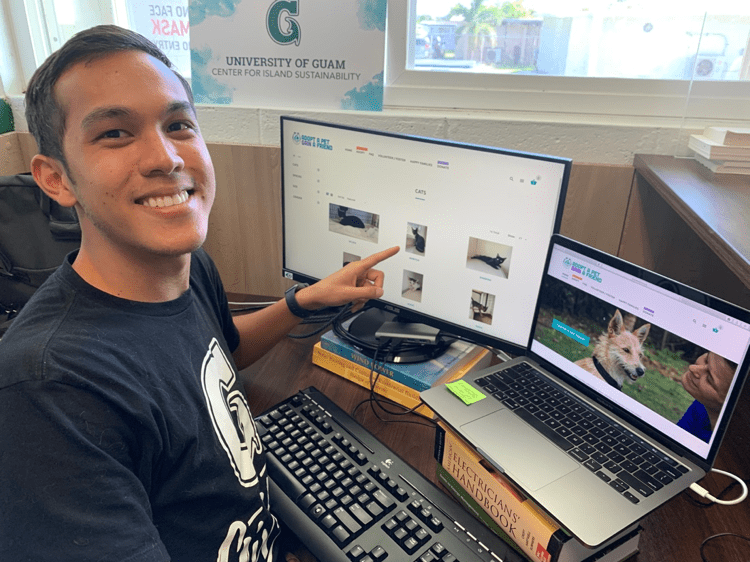
Although we don’t have statistics on the cat population locally, the Guam Animals in Need (GAIN) animal shelter reported that they received 1,650 cats in 2019. This is an indicator that we have an abundance of cats that need homes. Therefore, it’s more sustainable to adopt cats from local animal shelters or from pet stores that adopt rescued animals as opposed to buying cats that were bred to be sold.
Adopt from GAIN online at guamanimals.org. They’re having a Halloween sale (50% off all online adoptions) on Saturday, Oct. 31! Due to COVID-19, all adoptable animals are in foster homes and all adoptions are taking place online.
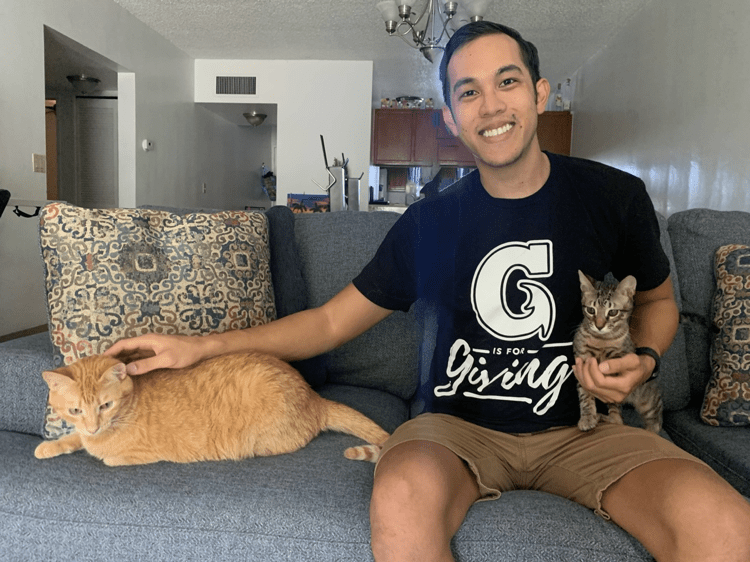

This article was written by Phillip John R. Cruz, sustainability coordinator with UOG's Center for Island Sustainability.
